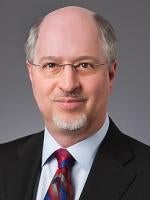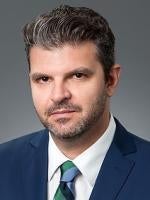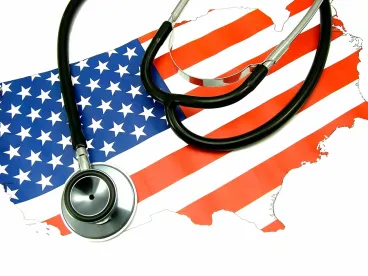Laguna Niguel, California. Another wild year in healthcare is upon us and another insightful and inspiring week of discussions at the 2019 Health Evolution Summit (HES) has just wrapped up in California. HES, which many refer to as “Baby JP Morgan” (a reference to the annual JP Morgan Healthcare Conference in San Francisco, California), brings together some of the most influential minds and leaders in healthcare in an intimate setting offering the opportunity to participate in frank and detailed discussions regarding the healthcare industry, what we’re doing right, what we can do better, and what we envision for the future. Healthcare thought-leaders focused on disruptive technologies and Artificial Intelligence (“AI”), managed care, legislation and policy and virtually all other aspects of the healthcare system all participated in lively discussions throughout the week and we were privileged to join the fun.
Health, Not Healthcare
There was a true focus on consumerism, patient experience, and the delivery of “health, not healthcare” at the conference with an interesting dichotomy among companies focused on engagement of the portion of the population that does not take an active role in managing their own health (i.e., healthy people) and companies focused on those suffering from chronic conditions that require more hands-on involvement to manage a completely different set of challenges.
A few themes emerged from discussions throughout the week:
Managing the Treatment Costs of Chronic Conditions
With the explosion of new drug therapies targeted at chronic conditions and terminal illnesses and a national focus on the provision of effective healthcare services to those suffering from these ailments, patients are able to live longer than ever before but at what cost? Many of the therapies coming to market are incredibly expensive and payors and patients are struggling to manage the costs. How can we as a society reap the benefits of advances in these areas while preserving the economic incentives necessary to spur innovation? How can payors and patients equitably manage the costs of these new therapies when patients are not required to stay with a particular health plan for any significant period of time? Ever hear of a “medical mortgage” or a “drug mortgage”? You might in the coming years….
Improving the Patient Experience through Technology
How are we going to use technology to improve the healthcare experience? We saw some amazing new technology from Augmedix that uses Google Glass (a six-year old technology) to change the way you interact with your doctor during your next office visit – in short, your doctor will be focusing on you and not his/her data entry responsibilities. By donning high-tech spectacles made with Google Glass, your doctor will be able to harness the power of a remote-located healthcare professional to assume responsibility for documenting your visit, completing your medical record, and preparing all other paperwork necessary for your care and your doctor’s practice – all before you pay your copay! Yes, we know that your physician can multi-task; however, do you really want your physician to practice his/her multi-tasking skills while you are trying to use your limited face-to-face time to discuss your health status?
The practical benefits of the technology not only include a shift in physician attention from the computer screen to the patient in the room, they also include the quality of patient documentation, the completeness of the medical record – and, in turn, the accuracy of coding for claim submission – and the ability of mid-levels and non-physician practitioners to effectively participate in quality assurance activities with the immediate availability of accurate and complete treatment information. Other innovations continue to focus on wearables, AI-powered tools, telehealth and other patient enablement tools to keep patients out of facilities or reduce stay times.
Harnessing the Power of Data
What are we going to do with all of this data? The marriage of healthcare and data analytics has resulted in an explosion of data aggregation. There is a treasure trove of data being collected and the question is how can we extrapolate useful information from the data.
While machine learning and deep learning techniques are helping us deduce patterns and risk factors applicable to the health of patient populations, we are not yet able to predict risk, prevent negative outcomes, or utilize patient data in the proactive ways we all dream about. Many of the industry leaders we spoke to believe AI is on the verge of breakthroughs in the next five years that will radically change the way we approach health and healthcare. We are all on the edge of our seats waiting to see how the leading technology companies focused on AI development bring their advancements to bear in the field.
Healthcare Opportunities: Predictions for the Next Five Years
Eric Klein, the head of Sheppard Mullin’s Healthcare Practice Group, led a lively panel discussion with Richard Merkin, CEO of Heritage Provider Network, Nick Loporcaro, CEO of Landmark Health, LLC, Ken Burdick, CEO of WellCare Health Plans, Inc. and Robert Fraiman, Jr., President
Of Cain Brothers on the biggest opportunities in healthcare over the next five years. Perhaps surprisingly, most of the panel and other participants in the event focused on incremental changes rather than grandiose paradigm shifts. For example:
-
We heard a clear consensus that there will be winners and losers over the next several years with the winners potentially obtaining access to the best technology and innovation;
-
There is an expectation that telehealth and other virtual modalities will continue to augment the healthcare experience but many do not expect massive shifts in the system in the relative short term;
-
While acknowledging that the use of value-based payment methodologies for the provision of healthcare has reached a tipping point and is nationally accepted as the future of healthcare, program participants agreed that the true transformative power of value-based compensation (which has only been on the national stage for 5-6 years) has yet to be seen;
-
Many forecasted that healthcare innovation will provide physicians with more and better tools and incentives that will, in turn, encourage the development of treatment modalities and quality metrics that will promote higher quality and more cost-effective healthcare;
-
A general consensus emerged that Medicare Advantage is where the current innovation in value-based care resides and any “Medicare For All” discussions should really focus on “Medicare Advantage For All.” A “Medicare Advantage For All” structure would place the federal government at the top of the financial structure while allowing commercial insurers and providers to continue to innovate on risk-based healthcare payment models that reward healthcare outcomes;
-
There was wide-spread agreement that practitioners must refocus on the patient experience by accelerating the quality of care in every patient interaction as a key to effectively managing patient health;
-
The Panel discussed the need for a new class of ancillary provider focused on the management of a patient’s healthcare experience rather than the actual provision of healthcare services to the patient.Taking the case manager concept that is used by health plans when managing the care of their members and by hospitals when coordinating the care provided to their inpatients, this new type of provider would improve communication – including both patient-to-provider communication and provider-to-provider communication – at all points along the patient care continuum. In addition, through the use of technology, including the old fashioned telephone, such a provider would remove the bottleneck that makes it hard for patients to get appointments with their busy primary care physicians – a challenge made harder by the chronic shortage of primary care physicians in the U.S. – and the bottleneck that makes it hard for accurate healthcare data to follow a patient as he/she moves from one provider to the next.During the Panel discussion, one executive lamented that primary care physicians rarely receive timely notification when their patients are admitted or discharged from a hospital. With this new type of provider, such gaps in communication would be filled in a way that improves the patient’s healthcare experience, as well as the quality of healthcare that the patient receives.
Big Ideas, Big Personalities, and Big Solutions
There was no shortage of big ideas or big personalities at the Health Evolution Summit. However, the most refreshing aspect of the conference was the candid approach attendees take with one another. Away from the analyst and earnings calls that dominate the JP Morgan Healthcare Conference, leaders attending HES are given space to discuss best practices, worst practices, and the practical realities of the ever-more complex healthcare system in our country. Get enough big minds in a room for a few days and you’re bound to see some new connections and new ideas take shape. We’re excited to watch for developments coming out of the conference and will make sure to keep you in the loop.




 />i
/>i


